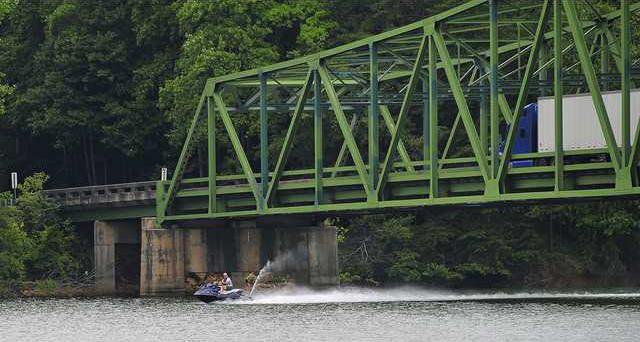Two federally protected bat species are delaying replacement of Boling Bridge at the Hall-Forsyth county line.
Georgia’s newly awarded contract on the project starts in July, “but actual work on the ground will not start until Nov. 1 because of a provision in the contract of not disturbing bats until then,” said Michael Terrell, senior vice president of Scott Bridge Company Inc. of Opelika, Ala.
Last week, the Department of Transportation awarded the $20 million project to Scott Bridge. The project calls for replacing the bridge on Dawsonville Highway/Ga. 53 over the Chestatee River.
The new bridge will be built next to the old one, which will remain open during the project. The old bridge will be removed once traffic has been shifted to the new bridge.
Mohamed Arafa, a DOT spokesman, confirmed the delay in the project, which is slated for a March 31, 2019 completion.
He cited a provision in the contract that says “all clearing of woody vegetation will occur outside of the summer activity period of the federally protected northern long-eared bat and Indiana bat.”
“It seems to be overkill for a bridge project because of all the trees and bushes in the environment that the bats can use next-door to the projects,” Terrell said. “... Bats are pretty adaptive; they will move to another location.”
This is not contractors’ first brush with endangered species.
The Indiana bat has affected other area projects, including the replacement of Clarks Bridge on Clarks Bridge Road/Ga. 284 in Gainesville and a multi-use trail running between Palmour Drive and the Georgia Department of Labor off Atlanta Highway/Ga. 13.
Also, the barn swallows’ nesting period delayed bridge work as part of the DOT’s widening of Lanier Islands Parkway/Ga. 347 in South Hall.
It’s “all across Georgia,” Terrell said of the nesting. “It affects bridge construction because the barn swallows build a mud nest, and the bridge beams work well for them. So, an old bridge can’t be torn down with active nests.”
There is also a plan in place to accomodate ospreys who often nest on Boling Bridge.

